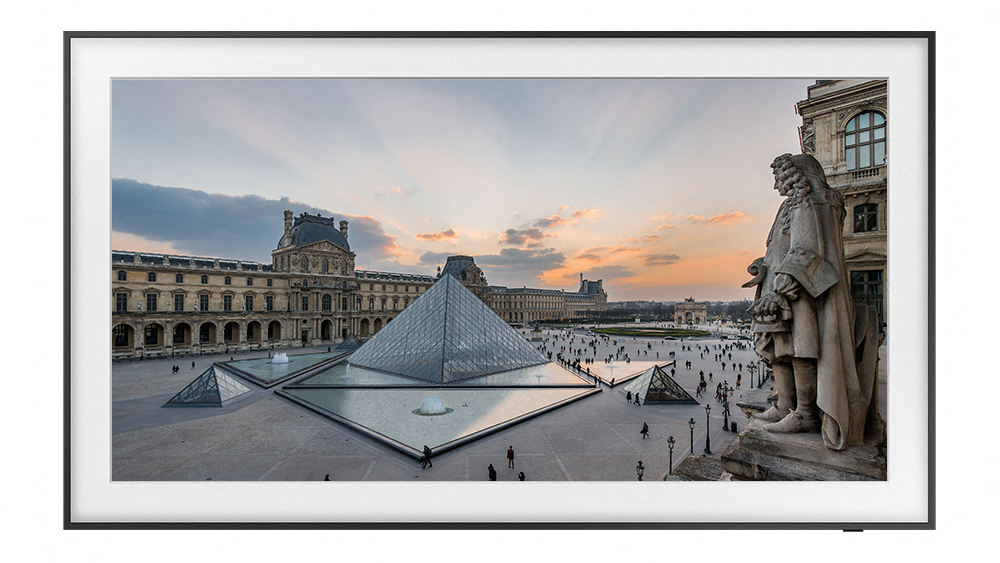Owners of Samsung’s The Frame QLED TVs are getting a serious upgrade to their art collection. Thanks to a new partnership with the Louvre gallery in Paris, Samsung has added world-famous works of art like the Mona Lisa and The Wedding at Cana — 40 works in all — to its Art Store catalog, which The Frame TV can display when not being used for video content.
The new collection also includes photos of the Louvre galleries, its architecture, and museum grounds (Louvre Pyramid, Tuileries Garden, etc.). Samsung says that the partnership will grow the number of included artworks over the coming year. When you include these new items, The Frame’s Art Store catalog now includes more than 1,500 works of art from 42 different countries in 4K resolution. In addition to the Louvre, the catalog also has works from the Prado Museum in Madrid, the Albertina Museum in Vienna, the Tate Modern in London, the Van Gogh Museum in Amsterdam, the Hermitage State Museum in Saint Petersburg, Russia, and online photography gallery Lumas.
The timing of the new collection from the Louvre coincides with the debut of Samsung’s expansion of The Frame series TVs, which are now available in sizes ranging from 32 inches to 85 inches. The 85-inch model should be a spectacular canvas for all of the available Art Store works. With The Frame’s ability to mount flush to a wall, or to sit on an easel-like stand, it definitely fits the part of a digital frame on steroids.

When you buy a The Frame TV, you get free access to a limited number of artworks. For access to the full collection from the Art Store, a $5 per month subscription is required. However, once a work of art has been downloaded, it’s yours to display for as long as you own the TV. Samsung’s Ambient Mode, which it uses to display art or photos when not in use, consumes about 30% as much power as the TV would when showing TV shows or movies. LG’s Gallery Series G1 4K OLED TV offers a similar experience.
Editors' Recommendations
- Samsung Music Frame hands-on: invisible audio done right
- Samsung’s Music Frame makes audio look as good as it sounds
- LG is bringing Baby Shark and high-end art to its smart TVs with a range of new apps
- Samsung confirms its 2023 QD-OLED TVs start at just $1,900, are available now
- Why Samsung built an NFT aggregator into its new TVs






